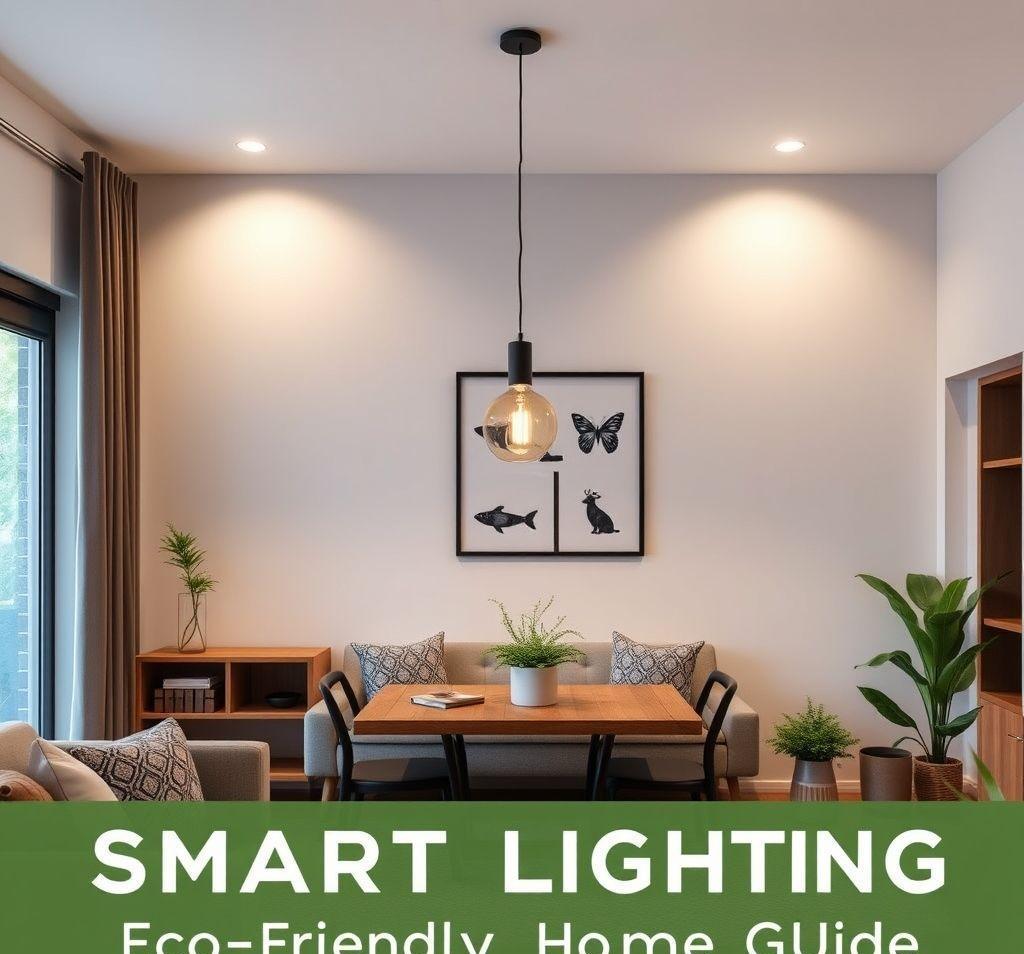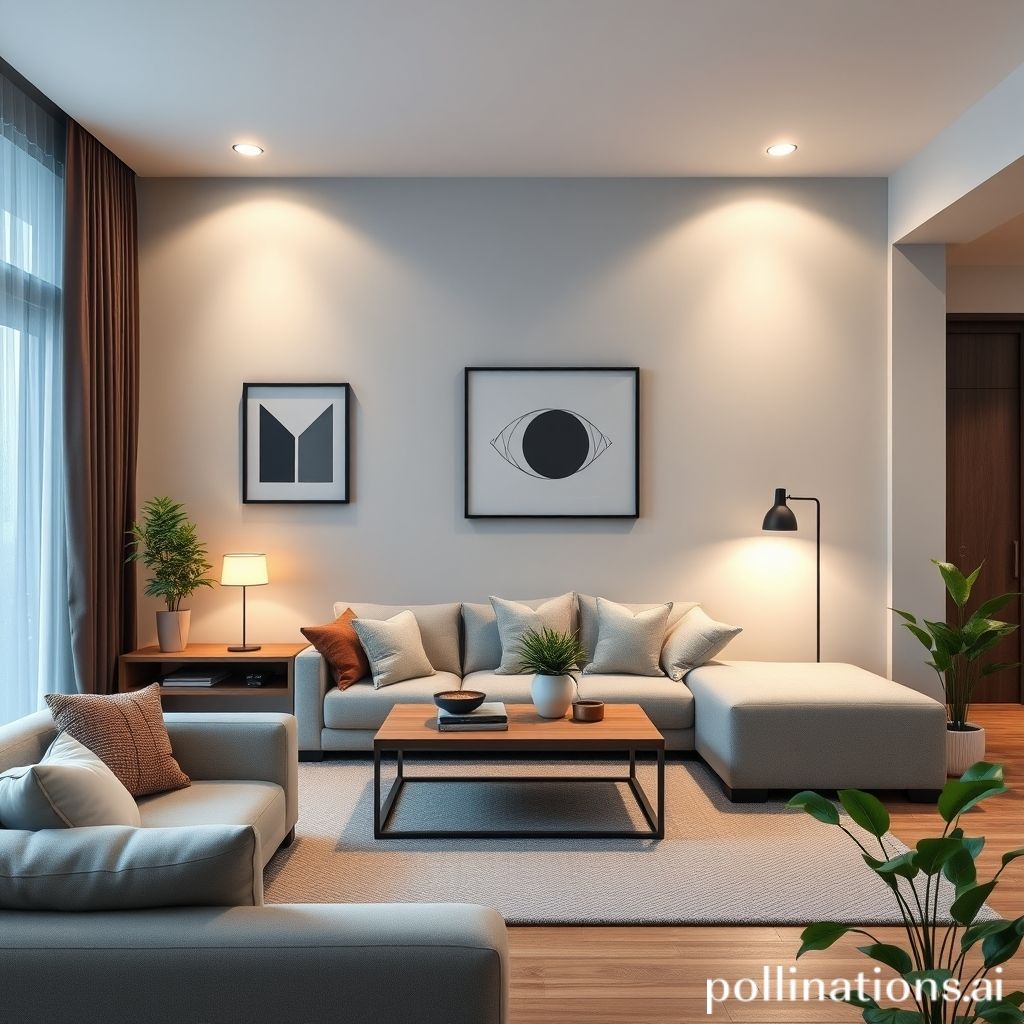Ultimate Guide to Smart Lighting for Your Eco-Friendly Home in 2024
Choosing the Right Smart Bulbs for Sustainability and Style
The heart of any smart lighting system is the bulb. When aiming for an eco-friendly home, the choice of bulb becomes crucial. Here’s a breakdown of popular options:
- LED Bulbs: These are the champions of energy efficiency. LEDs consume significantly less power than traditional incandescent bulbs, boasting a lifespan that can stretch for years. Beyond standard white light, smart LEDs offer a spectrum of colors and adjustable brightness, allowing you to tailor the ambiance to your mood and activity. Look for Energy Star certified LEDs to ensure optimal performance and energy savings. Consider the Kelvin (K) rating to determine the color temperature: warm white (2700-3000K) for cozy spaces and cool white (3500-4100K) for task lighting.
- Smart Filament Bulbs: Marrying vintage aesthetics with modern technology, smart filament bulbs mimic the look of classic Edison bulbs while offering smart control. While they may not be as energy-efficient as standard LEDs, they still surpass incandescent bulbs. Their warm, inviting glow is perfect for creating a relaxing atmosphere in living rooms and dining areas. Look for dimmable options to further enhance the ambiance and conserve energy.
When selecting smart bulbs, pay attention to the lumen output (brightness), wattage (energy consumption), and color rendering index (CRI) for accurate color representation. Investing in high-quality bulbs ensures longevity and optimal performance, contributing to a more sustainable lighting solution.
Smart Switches, Dimmers, and Hubs: The Control Center
Smart bulbs are only part of the equation; you also need effective control mechanisms. Here’s where smart switches, dimmers, and hubs come into play:
- Smart Switches and Dimmers: These replace your existing switches, allowing you to control your lights directly from the wall, your smartphone, or even voice commands. Smart dimmers are particularly useful for creating different moods and conserving energy. Some advanced models even track energy usage, providing insights into your consumption patterns. Ensure compatibility with your existing wiring (neutral wire requirements are common) and consider the load capacity to avoid overloading the switch.
- Smart Hubs: A smart hub acts as the central brain of your smart home, connecting and controlling various devices, including your smart lights. Hubs are particularly important for devices using Zigbee or Z-Wave protocols. They allow for more complex automation and integration with other smart home devices. Popular hubs include those from Philips Hue, Samsung SmartThings, and Amazon Echo (which supports Zigbee). Before investing in a hub, consider the range, the number of devices it can support, and its compatibility with your preferred ecosystem.
Choosing the right control system depends on your needs and the complexity of your smart home setup. A simple setup might only require smart bulbs and a smartphone app, while a more comprehensive system benefits from a dedicated hub for centralized control and enhanced functionality.
Understanding Wireless Protocols: Wi-Fi, Zigbee, and Matter
Smart lighting systems rely on wireless protocols to communicate. Understanding these protocols is essential for ensuring seamless connectivity and optimal performance:
- Wi-Fi: Many smart bulbs connect directly to your home Wi-Fi network, offering easy setup and control via a smartphone app. Wi-Fi is a widely available and familiar technology, making it a convenient choice. However, too many Wi-Fi devices can strain your network’s bandwidth, potentially impacting performance. Consider the range of your Wi-Fi router and the number of devices you plan to connect.
- Zigbee: Zigbee is a low-power, mesh networking protocol ideal for smart home devices. It creates a self-healing network where devices can communicate with each other, extending the range and reliability of the system. Zigbee requires a hub to connect to your home network. It’s a good choice for larger homes or those with numerous smart devices.
- Matter: Matter is a new, open-source connectivity standard designed to unify the smart home ecosystem. It aims to provide seamless interoperability between devices from different manufacturers, regardless of the underlying protocol (Wi-Fi, Thread, etc.). Matter promises a simpler, more reliable, and secure smart home experience. As Matter gains wider adoption, expect to see more devices supporting this standard, simplifying your smart lighting setup.
The choice of protocol depends on your specific needs and preferences. Wi-Fi offers simplicity, while Zigbee provides reliability and scalability. Matter promises a future of seamless interoperability, making it a worthwhile consideration for new smart home setups.
Planning Your Smart Lighting Setup for Energy Saving and Ambiance
Effective planning is key to maximizing energy savings and creating the perfect ambiance with smart lighting. Consider the following:
- Room-by-Room Assessment: Start by assessing the lighting needs of each room. Identify areas where you use lights most frequently and where you can benefit from dimming or color control. For example, you might want bright, cool lighting in the kitchen for food preparation and warm, dimmable lighting in the living room for relaxation.
- Automation and Scheduling: Utilize smart lighting features to automate your lighting based on time of day, occupancy, or even sunrise and sunset. Create schedules to turn lights on and off automatically, reducing energy consumption when you’re not home or when natural light is sufficient. Motion sensors can also be used to trigger lights in hallways or bathrooms, ensuring lights are only on when needed.
- Energy Monitoring: Some smart lighting systems offer energy monitoring features, allowing you to track your energy consumption and identify areas where you can save even more. Analyze your usage patterns and adjust your settings accordingly to optimize energy efficiency.
- Layered Lighting: Combine different types of lighting (ambient, task, and accent) to create a balanced and visually appealing space. Use dimmable smart bulbs to adjust the brightness of each layer, creating different moods and saving energy.
By carefully planning your smart lighting setup, you can create a home that is both energy-efficient and beautifully lit, enhancing your comfort and well-being.
Smart lighting empowers you to create an eco-friendly home with personalized ambiance. By choosing the right bulbs, understanding control systems and protocols, and planning your setup thoughtfully, you can achieve significant energy savings and enhance your living space. Embrace the future of lighting and transform your home into a sustainable and beautifully illuminated haven.



